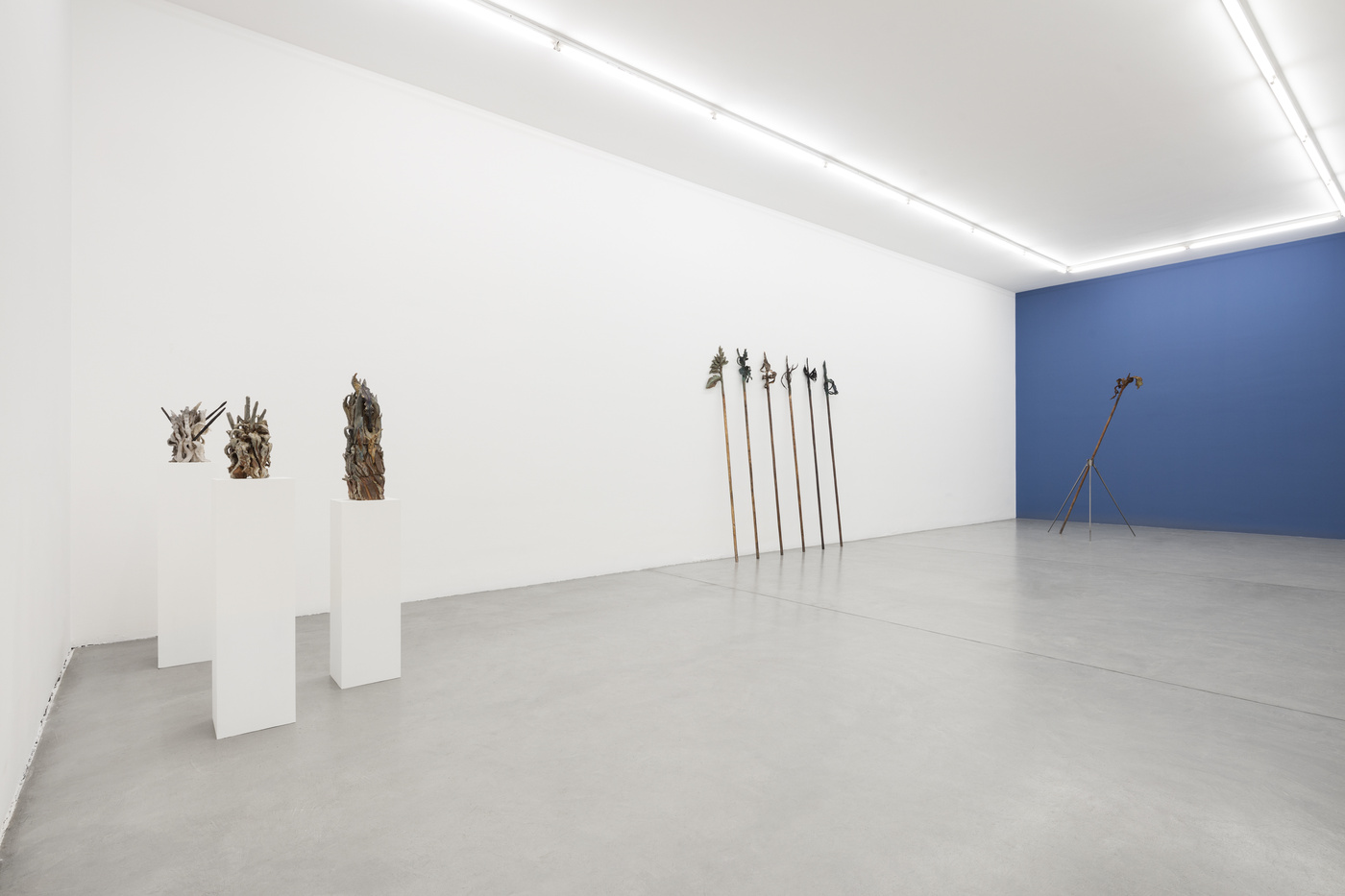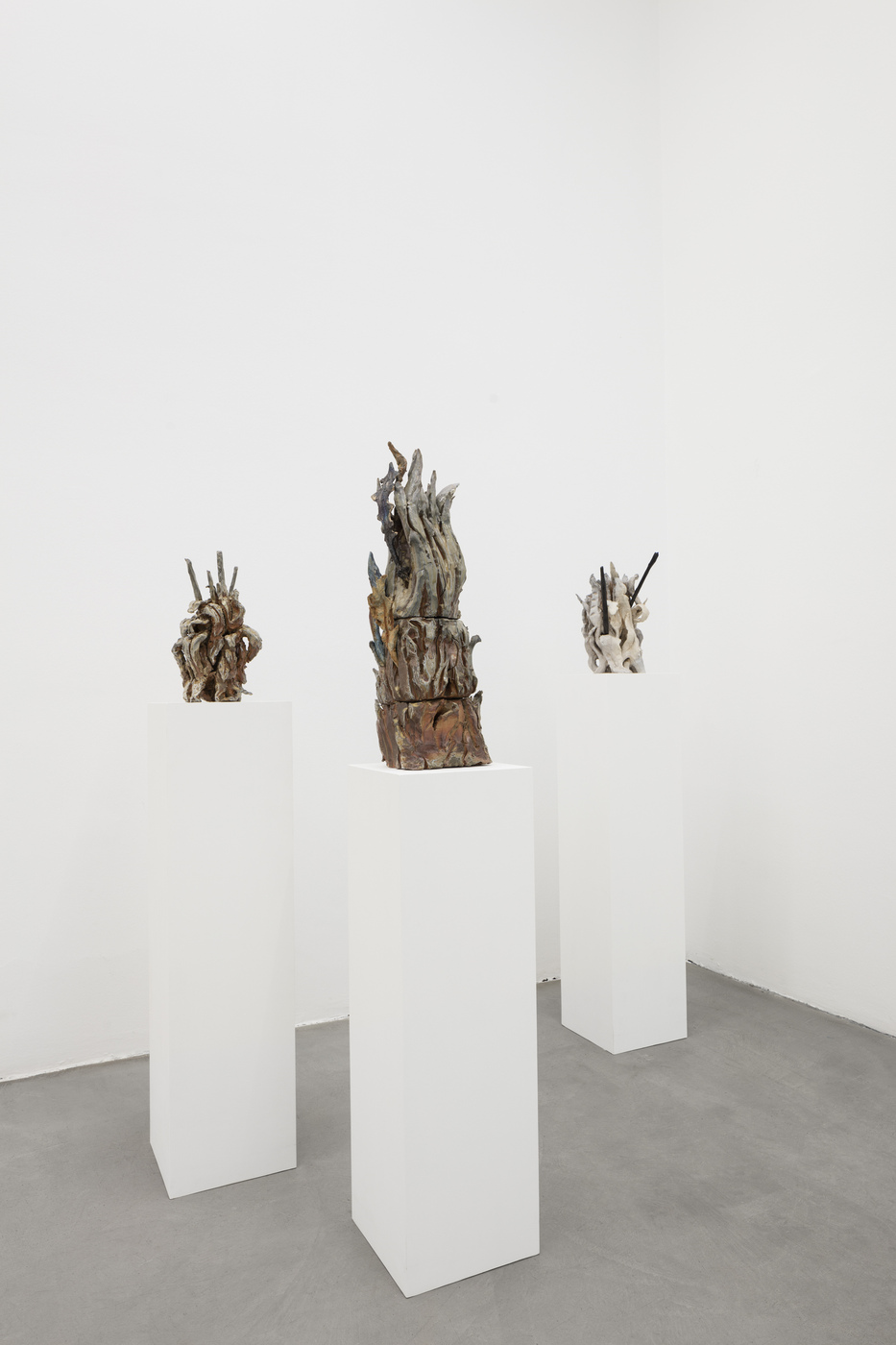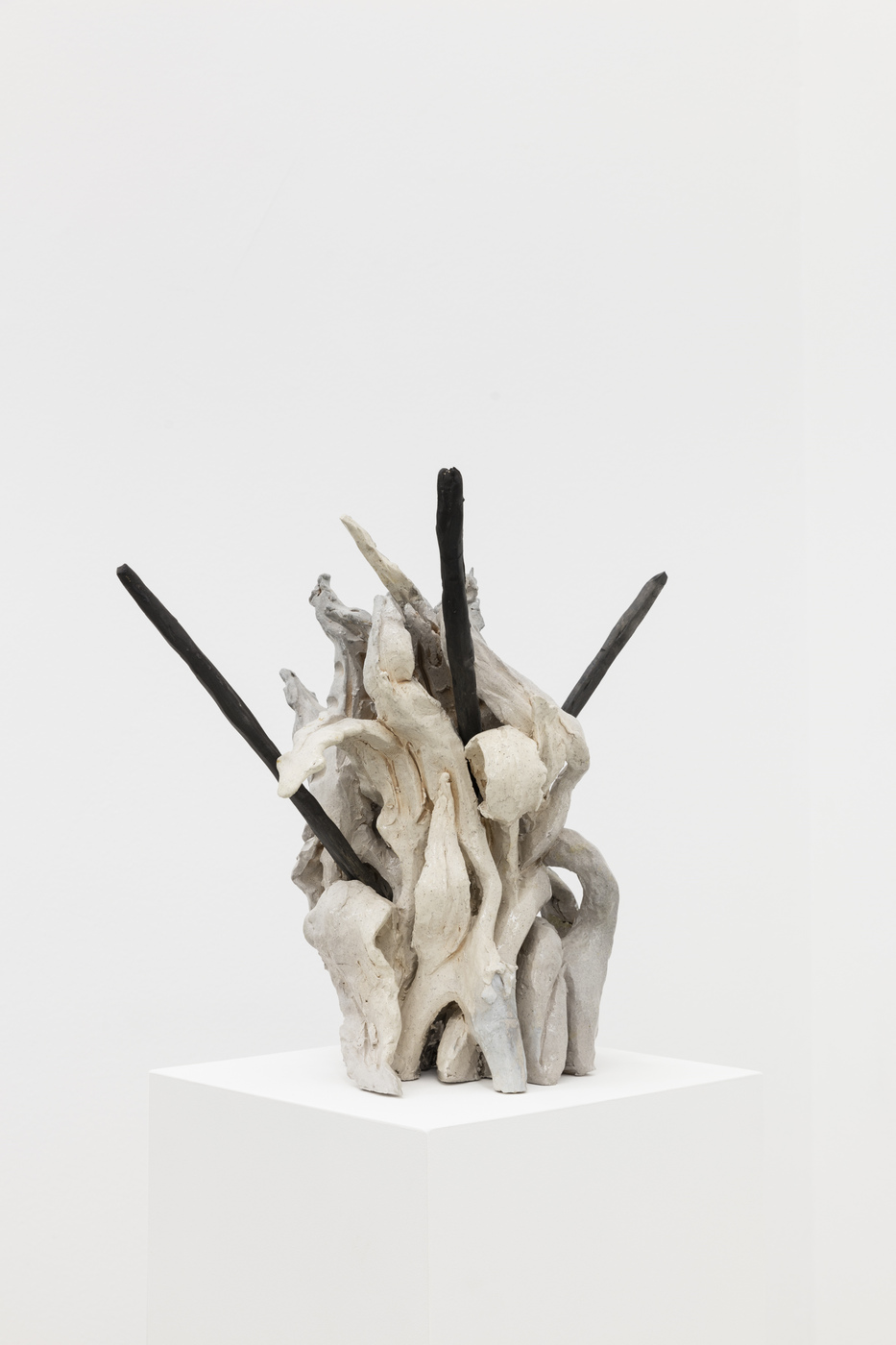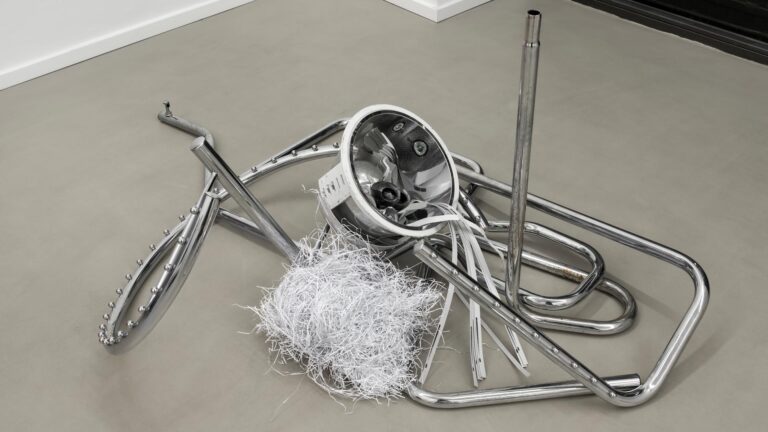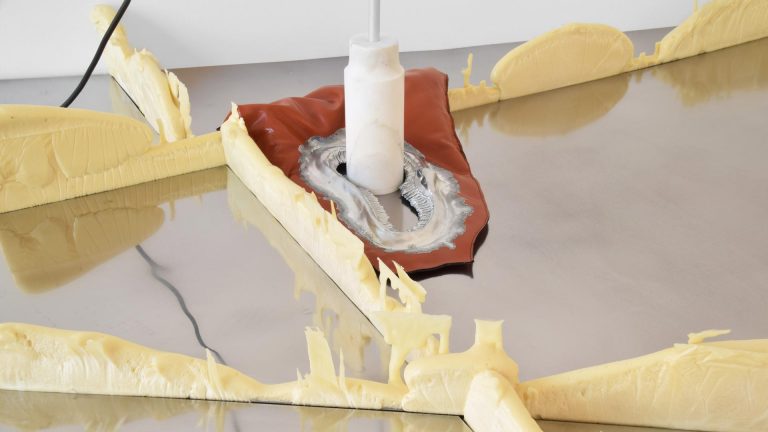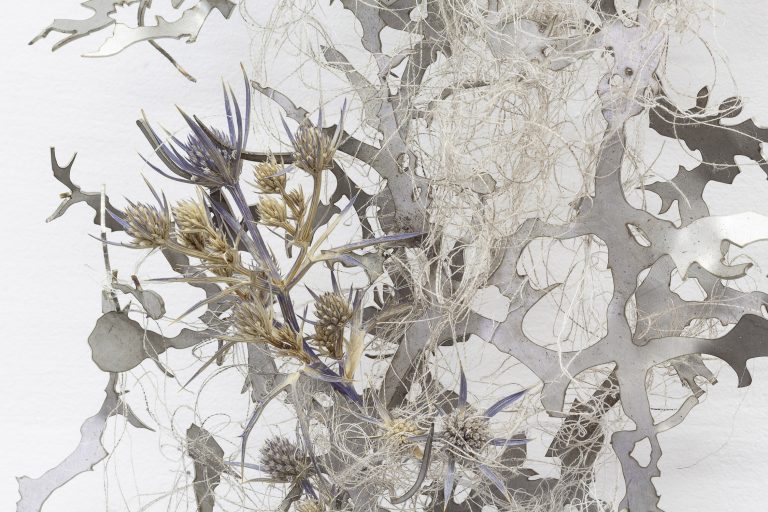Artist: Francesco Simeti
Exhibition title: Armed, Barbed and Halberd-Shaped
Curated by: Nicola Ricciardi
Venue: Francesca Minini, Milan, Italy
Date: May 11 – July 30, 2016
Photography: all images copyright and courtesy of the artist and Francesca Minini
Mugwort, thornapple, goldenrod and poppy. Arise, children of the weedland, proletariat of the plant kingdom, and topple the thrones of the nobler horticultural flora, chop off their hypercivilized, hybridized heads. Gird yourselves and gallop out to overthrow the rose, queen of the garden. The Romantics and poets, Emerson and Thoreau, are with you. Gerard Manley Hopkins is singing, “Long live the weeds and the wilderness yet”! But then the gardener’s hand swoops down—as maker, warden and judge of artificial landscapes—and the revolt is already quelled. A hoe to the roots and the weeds have been extirpated. Every garden tended by man is a failed coup-d’état, a foundered revolution.
Not this time, not in this show. The garden designed by Francesco Simeti has no room for roses: the victors on this battlefield are amaranth and nettle, burdock and nightshade. Worlds away from the West’s coveted utopia of tamed green spaces eternally in flower, where the bugs never bite and the leaves never sting. The landscape dreamed up by Simeti does not echo the reassuring repetitiveness of flowerbeds, the hierarchical order of botanical gardens, the geometric precision of tilled fields: it is not inspired by Monet’s flowery idylls, but rather by Charles Burchfield’s swamplands, unplowed meadows and abandoned lots.
Simeti’s plants grow on plinths, cut through concrete like knife blades, climb over the masonry to cover entire walls. Their vitality, vehemence and sovereignty is celebrated, yet at the same time, seems negated: the materials they are made of are inorganic; their forms sculpted by the very hands they tend to fear, those of man. In this marsh-garden, where even the mist is manmade, photosynthesis has given way to lost-wax casting, to the kiln. The boundary between nature and culture dissipates like fog, everything is wild and everything is crafted.
Hence the first flash of insight: these bronze flowers, clay leaves and cloth shrubs proclaim the impossibility of imagining wild nature without human nature; from the loss of biodiversity to climate change, the ecosystem is itself an anthropic artifact. Some form of gardening is now considered inevitable even in oasis, sanctuaries and reserves—in the places we would preserve as monuments to our own absence. Simeti does not merely point out this paradox, but by sculpting his weeds like halberds, helmets, and shields, presents us with one more truth:
however certain we may be that nature’s survival depends only on us, nature has proven capable of defending itself on its own. With every push or pull man has given to the biosphere, plants have always responded by sharpening their weapons, honing their agility, gearing up to survive our impact. What are weeds but an empirical demonstration of nature’s capability to withstand us? On the other hand, whether humans can adapt to the changes brought about by their own actions has yet to be seen. So who is more vulnerable and unarmed—Simeti seems to ask—who really needs to be defended: us or them?
Francesco Simeti, The Wilds VI, 2015
Soda fire and glaze ceramic, 41 x 30 x 30 cm
Francesco Simeti, The Wilds V, 2015
Wood fire ceramic, 38 x 20 x 21 cm
Francesco Simeti, The Wilds XIV, 2016
Anagama kiln ceramic, bronze element, glazed leaves, patina, 67 x 25 x 25 cm
Francesco Simeti, Black reef I, 2016
Ceramic, 56 x 23 x 13 cm
Francesco Simeti, Centaurea, 2016
Ceramic, 18 x 30 x 40 cm
Francesco Simeti, Billows V, 2015
Ceramic, dimensions variable
Francesco Simeti, Cypress swamp, 2016
Print on linen, 226 x 85 cm, 150 x 100 cm
Francesco Simeti, Awl-shaped, 2016
Ceramic, 52 x 14 x 10 cm
Francesco Simeti, Spathe bearing, 2016
Bronze, 245 x 42 x 18 cm
Francesco Simeti, Two-ranked, 2016
Bronze, 245 x 36 x 5 cm
Francesco Simeti, Spadix, 2016
Bronze, 245 x 17 x 14 cm
Francesco Simeti, Distichous, Corniculate, Runcinate, 2016
Watercolour on paper, 45,5 x 30 cm each



